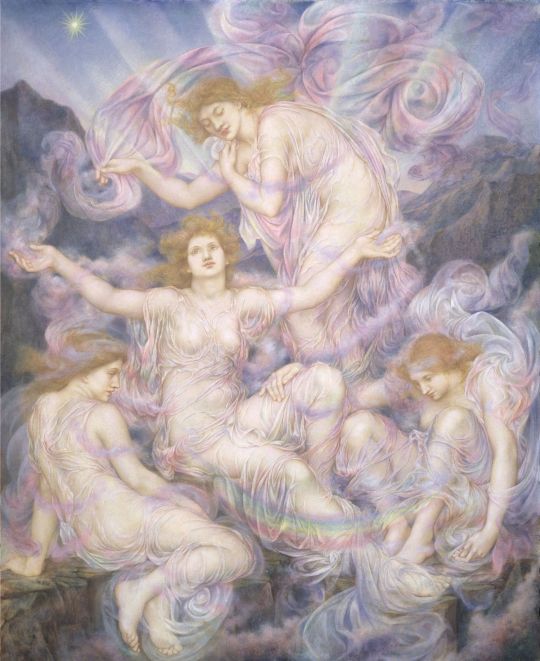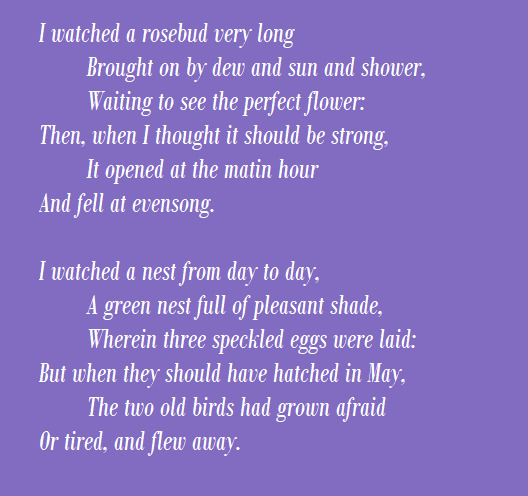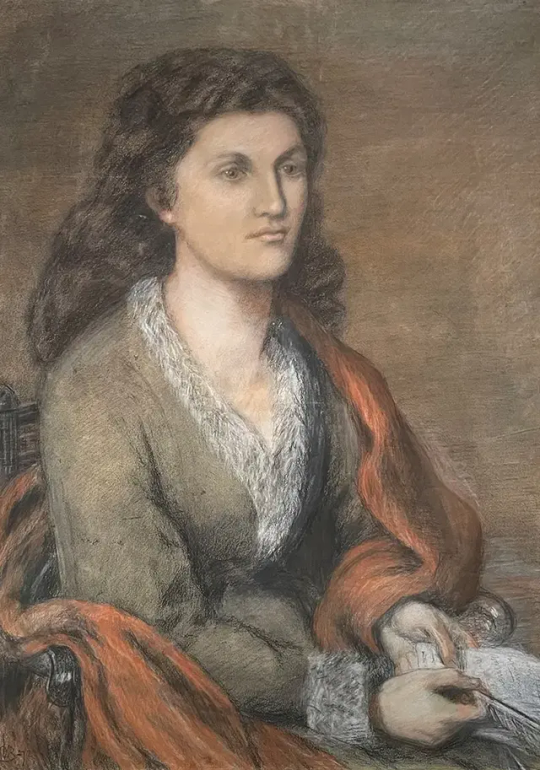#pre-raphaelite sisterhood
Explore tagged Tumblr posts
Text
tag game
share nine of your most favourite famous paintings and tag your moots









from left to right, top to bottom; ecce ancilla domini (the annunciation) by dante gabriel rossetti, the nightmare by henry fuseli, sappho at leucate by antoine jean-gros, at the dressing table by zinaida serebriakova, la mélancolie by louis jean françois lagreneé, girl holding lemons by william-adolphe bouguereau, mi novia by juan luna, acrobats at the cirque fernando (francisca and angelina wartenberg) by pierre-august renoir, woman holding a fruit by raja ravi varma
(open images for their full quality)
tagging @vilecemetery @mossterious @urlocalbone @doriansredroses @rottingangel9 @preposterousname @sweetashe @butterflypython @daughteroftyche08 @noisette-tornade @sparklykat-hideoutenthusiast and anyone else who wants to join
#ana posts#tag game#famous paintings#famous art#art#artwork#art history#paintings#top nine favourite famous paintings#goth#gothic#pre-raphaelite sisterhood
22 notes
·
View notes
Text
#pre-raphaelite#pre-raphaelite sisterhood#victorian art#victorian era#women artists#lucy madox brown#Catherine Madox Brown#ford madox brown
4 notes
·
View notes
Text


Early Valentines present 🌿🪷
#cottagecore#pre raphaelite#Victorian#victorian aesthetic#poetry#books#book aesthetic#books and reading#bookblr#19th century art#dante gabriel rossetti#pre raphaelite brotherhood#pre raphaelite sisterhood#19th century#19th century poetry#art#art history#fayriequeene
305 notes
·
View notes
Text




Rainbows in the art of Evelyn de morgan

20 notes
·
View notes
Text
Henchwomen Through the Ages
The "ages" of comics are not hard and fast things, and even comic book historians argue where they begin and end. They're more like moods than time periods, and your standard game of Henchwoman RPG will probably be set in a vague time period that could be anywhere from the thirties to today with an overall Silver Age mood. Still, let's take a look at how the roll of the Henchwoman has evolved, shall we?
Goldie is a gun-toting, cigar-chomping bank robber in victory rolls and a bullet bra. She's not called a henchwoman- she's called "Look out, that broad has a grenade!" She's loyal to the boss despite his dumb penny gimmick, but if he ever finked on her in court, he wouldn't live to see the sunrise. There's no Henchwomen's Union for her to join yet, but she's provided muscle for plenty of mob-backed unions. Goldie can't afford to be soft on heroes since they'd be just as happy to throw her off a roof as to arrest her, but she might be wooed by an appeal to patriotism- she ain't no Nazi rat! Her hobbies include matinee shows, swing dancing, and blasting coppers.
Sylvia is a competitive surfer and was a cocktail waitress until they fired her for slapping too many customers. Thanks to the newly formed Henchwomen's Union, she's treated much better by her current job, which usually involves crashing parties to steal themed jewelry. She and the heroes she fights have an understanding- they'll never be rough with her, and she won't check up on them after putting them in a death trap to see if they've died. On her off hours, she can go dancing in the same outfit she worked in- a silver jumpsuit, gogo boots and a purely decorative motorcycle helmet.
Brawny is a member of the Sisterhood of Wicked Witches, and she fights for a cause- or rather, several causes. These range from the reasonable (Save the whales!) to the less reasonable (A free ray gun for every child!) The Henchwomen's Union is strong enough to get her good pay, so many of her problems are philosophical- is she a good guy or a bad guy, and what do good and bad even mean? Brawny has to be a bit more careful than she would have been ten years ago, since death may well stick- but that also means she might really kill a hero, at least for a while, and that's what matters!
Tenebra prefers to be called a Dark Muse, a member of a vampire circle dedicated to bringing art to life, painted in colors of blood. Her eyeliner is swirly and her gowns are velvet, and she wears them onstage in her sideline darkwave band. Tenebra arranges her crimes in accordance with pre-raphaelite imagery, with victims displayed in heartbreakingly beautiful and mythologically-influenced poses. Her boss may technically be the Queen of the Vampires, and she may have a card with the Henchwomen's Union, but her true loyalty is to art itself.
Ferra is a mercenary with a separate pouch for each type of bullet, and she has a lot of types of bullet. Her stilettos are tall but her hair is taller, and she can strike intimidating poses that would break a normal person's back. The Henchwomen's Union had its own back broken by the bosses, and is now more of informal underground thing, but it still hooks her up with real deal bad guys. She'll kill without a second thought for her boss, but she's only one bad day away from turning her gun on him. It might even happen accidentally, since he and the heroes dress exactly the same. Ferra somehow has a heavy metal soundtrack even when there's no music playing.
Ally got a degree in psychology but until she can afford grad school, she gigs as a henchwoman. Her bosses are sillicon valley dickheads, but the first one to offer her real benefits will have her loyalty for life. Thanks to the resurgence of the Henchwomen's Union, Ally gets to wear big stompy boots instead of high heels, but she still has to wear a big day-glo logo on her leather jacket that might as well be a target sign. Her hobbies include pop culture conventions, smoking weed and credit card fraud.
152 notes
·
View notes
Text

Mural discovered in 2013, Red House, Bexleyheath, London UK
"The concept of the overall design was almost certainly by [Jane] Morris. Our initial thoughts are that the figure of Jacob was by Morris, Rachel possibly by Elizabeth Siddal, Noah by Madox Brown. But who painted Adam and Eve? Maybe [Dante Gabriel] Rossetti or [Edward] Burne-Jones?" (Jan Marsh)


19 notes
·
View notes
Text

Pre-Raphaelite Sisterhood ‘The Valkyrie’s Vigil’, Edward Robert Hughes http://preraphaelitesisterhood.com/persistence-myth/
4 notes
·
View notes
Photo

Marianne Stokes (1855–1927), Madonna and Child (c 1907-08), tempera on panel, 80 x 59.5 cm, Wolverhampton Art Gallery, Wolverhampton, England.
168 notes
·
View notes
Photo


“Symbols” by English poetess Christina Rossetti, of the noble Italian Rossetti family, and also sister of famous pre-Raphaelite painter Dante Gabriel Rossetti. This poem was first published in her 1862 volume, Goblin Market and Other Poems.
#christina rossetti#influences#pre-raphaelite#pre-raphaelite sisterhood#poetry#nineteenth century#romanticism#goblin market and other poems#i didnt feel like writing or digging up something old today
4 notes
·
View notes
Photo

Evelyn De Morgan: Head of a young girl charcoal on paper
18 notes
·
View notes
Text

Mathilde Blind by Lucy Madox Brown, 1872
Mathilde Blind (born Mathilda Cohen; 21 March 1841 – 26 November 1896), was a German-born English poet, fiction writer, biographer, essayist and critic. In the early 1870s she emerged as a pioneering female aesthete in a mostly male community of artists and writers. By the late 1880s she had become prominent among New Woman writers such as Vernon Lee (Violet Paget), Amy Levy, Mona Caird, Olive Schreiner, Rosamund Marriott Watson, and Katharine Tynan. She was praised by Algernon Charles Swinburne, William Michael Rossetti, Amy Levy, Edith Nesbit, Arthur Symons and Arnold Bennett. Her much-discussed poem The Ascent of Man presents a distinctly feminist response to the Darwinian theory of evolution.
Blind's early political affiliations were shaped by the foreign refugees who frequented her stepfather's house, including Giuseppe Mazzini, for whom she entertained a passionate admiration and about whom she would publish reminiscences in the Fortnightly Review in 1891. Other revolutionaries who frequent her mother and stepfather's house in St. John's Wood included Karl Marx and Louis Blanc. Her early commitment to women's suffrage was influenced by her mother's friend Caroline Ashurst Stansfeld, who was active in the British feminist movement from its origins in the 1840s. These radical affiliations are manifested in Blind's politically charged poetry, and in her own unbending commitment to reform. As Richard Garnett observed, in the society of political refugees and radicals Blind was raised in, "admiration must necessarily be reserved for audacity in enterprise, fortitude in adversity... anything breathing unconquerable defiance of the powers that were."
#pre raphaelite#the pre-raphaelite sisterhood#on two fronts really#read the wikipedia if you have a minute those are just small excerpts of much interesting material#victorian women#women authors#women painters#victorian era#lucy madox brown#mathilde blind#women's rights#women's suffrage#pre-raphaelite sisterhood
6 notes
·
View notes
Text

#cottagecore#cottage core#cottagecore aesthetic#forest#forestcore#woodland#pre raphaelite#pre raphaelism#pre raphaelite sisterhood#ophelia#shakespeare#nature#naturecore#nature aesthetic#fairycore#fairy aesthetic#green aesthetic#faeires#faerie#faecore#fae folk#elven aesthetic#fayriequeene
299 notes
·
View notes
Quote
As we have seen, Christina George Rossetti refused to join the literary society that her brother was organising in the summer of 1848. Not only did she decline to attend meetings; she was not even willing to let her brother read her poems aloud in her absence. As D.G. Rossetti explained in a letter to Hunt, she was 'under the impression that it would seem like display, I believe, - a sort of thing she abhors.' Yet she was not reluctant to publish her poems in the Germ. Indeed, hatred of 'display' might be called the hallmark of the poetic view she established in the Germ. More ruthlessly than her male colleagues, she carries through the Pre-Raphaelite principle of eliminating all traces of contrivance or artifice. At first thought, other poems in the Germ seem more obviously 'Pre-Raphaelite', either in their use of medieval subject matter or archaic language or in their keen observation of natural details. Both characteristics are evident in the two poems by Thomas Woolner that opened the first issue [...] Christina Rossetti's poems may seem slight in comparison; most of them scrutinize a single thought or mood rather than dramatising a narrative. They are both intensely introspective and strangely reticent, as if to emphasize the Victorian woman's exclusion from the external world of public affairs along with her subjection to the demands of modesty. They may, then, seem to be 'women's poetry' more than they are 'Pre-Raphaelite poetry'. But in a more significant sense Rossetti's poems establish a poetic equivalent for the 'primitivist' literalism and the precise touch of the Pre-Raphaelite painting. They turn Pre-Raphaelite keenness of vision inward, and they present the results with the coolness of scientific observation, never with the extravagance of poetic 'display'. The diction is so lucid and precise, the metres and rhymes so skillfully handled, that the reader never notices the absence of the conceits and flourishes, the artful images and 'poetic' vocabulary that remain obtrusive in many of the other poems of the Germ. [...] Rossetti's diction is so lucid that later critics have tended to characterise her as a 'natural' poet, one to whom the words came in an effortless flow of inspiration. But a comparison to Woolner's poems, or others in the Germ, suggests that the apparent artlessness is the result of rigorous technical control. No awkward rhymes or rhythms, no inapposite word choices distract the reader from direct apprehension. This sharpens the effect of the withheld referent; the sense of wonder comes clear of poetic obscurity. As we shall see, this kind of technique, combining descriptive precision with an unknowable final signification, became important in the pictorial art of later Pre-Raphaelitism. In 1859 Christina Rossetti was the most accomplished of the poets associated with the Pre-Raphaelite circle.
Elizabeth Prettejohn, excerpt from “Chapter 2: Pre-Raphaelite Sisterhood,” from The Art of the Pre-Raphaelites
#elizabeth prettejohn#pre-raphaelite sisterhood#pre-raphealite#christina rossetti#victorian literature and gender#notes#women in art
7 notes
·
View notes
Link
I’ve often said that when I embrace images of Ophelia, I’m reaching into my past and comforting my younger self. When we champion Elizabeth Siddal, we as women are cheerleaders for our own creative endeavors, fighting in a way she couldn’t against those who disappoint us; waging, as she was ill-equipped to do, battles against obstacles like depression and addiction.
3 notes
·
View notes
Photo

The Wandering Jew by Evelyn de Morgan, 1888
Rare chance to see a recently discovered Evelyn De Morgan painting! On Thursday 12th December, Evelyn De Morgan’s painting The Wandering Jew (1888) will go on sale at Christie’s in London, with a chance to view the picture from 7 – 11th December in the ‘British Art: Victorian, Pre-Raphaelite & British Impressionist Art sale’ exhibition. ©
#1888#19th Century#Evelyn De Morgan#art#painting#the wandering jew#Pre-Raphaelite Brotherhood#pre-raphaelites#spiritualism#Evelyn Pickering De Morgan#PRB#pre raphaelite sisterhood
168 notes
·
View notes
Photo

In Search of the Sisterhood Discovering Pre-Raphaelite Women
BY KIRSTY STONELL WALKER
The word Pre-Raphaelite almost always conjures up a certain kind of woman. She has a cascade of copper hair, a face filled with mournful longing, and a deep jewel-colored gown. She has found herself locked in a tower, married to the wrong man, or possibly she has just died of love, because these things just happen. Though the models of Pre-Raphaelitism were almost entirely women, up until recently we assumed that the artists were always men: The hand that held the brush was invariably some chap called Rossetti, or Millais, or Holman Hunt. In recent years, however, the world has rediscovered the Pre-Raphaelite movement’s bevy of equally talented female artists, who span from its inception until our current day. It’s about time we gave them our love.
The Pre-Raphaelite Brotherhood, formed in 1848, was a very male establishment, as the name would suggest. John Everett Millais, a child prodigy, joined forces with his friends William Holman Hunt and Dante Gabriel Rossetti, agreeing that painting had to change from the “sloshy,” unrealistic mess it had got itself into. With them were Thomas Woolner, a sculptor; Frederick Stephens, an uncertain painter who gave it all up to write; William Michael Rossetti, the far more sensible brother of Dante Gabriel; and James Collinson, a painter whom no one now remembers. Working at the same time on her influential poetry was the Rossettis’ sister, Christina, but the first Pre-Raphaelite painter to wear a dress was Elizabeth Siddal. Like Christina, Siddal was pulled into the Pre-Raphaelite crowd via modeling. Christina posed for her brother’s images of the Virgin Mary; Siddal posed most famously for Millais’s Ophelia and then for Rossetti’s obsessive portraits until her death in 1862. Between sittings, Siddal managed to convince Rossetti to help her develop her painting style, and her contemporaries likely knew her equally for her art as for her face. Her watercolors were exhibited alongside the works by the men. She even won the patronage of John Ruskin, the art critic whose writings had inspired the Pre-Raphaelite movement. However, she was from very humble origins, and her reliance on her artwork to survive contributed to her early death from laudanum.
Read the full interview at EnchantedLivingMagazine.com
13 notes
·
View notes